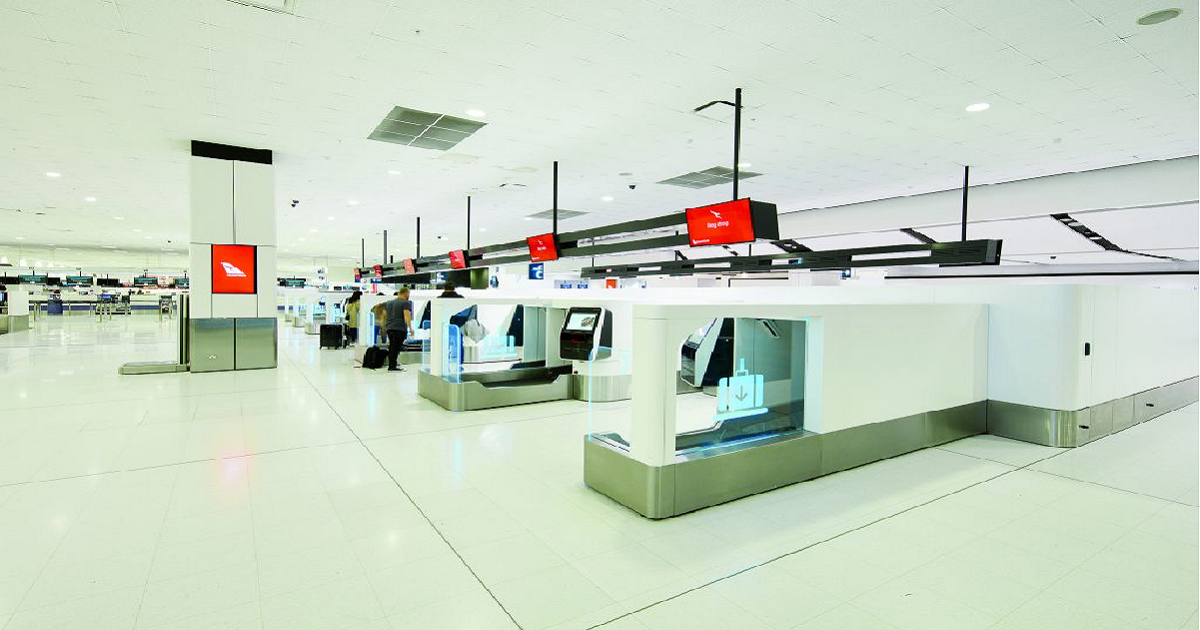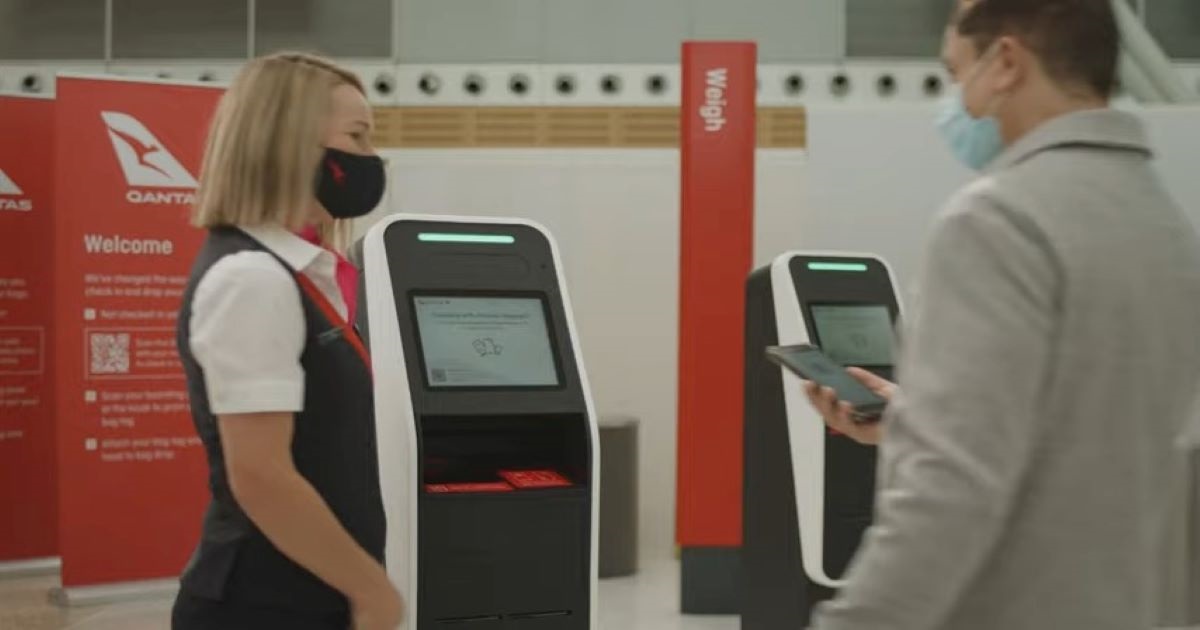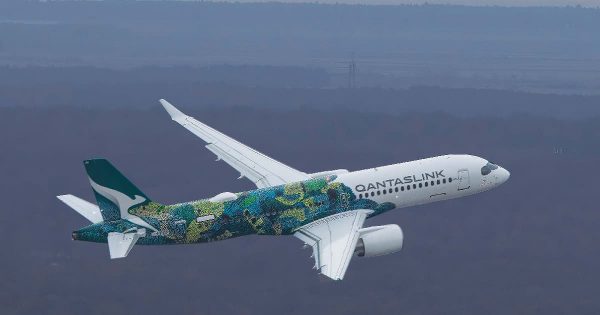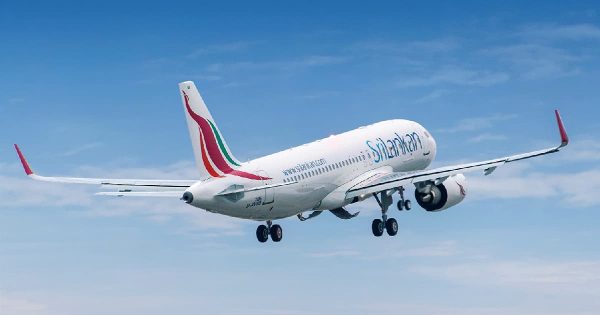Qantas is replacing all its self-service check-in kiosks at Australian airports with new kiosks that only print bagtags.
All passengers will have to check-in online and get a digital boarding pass before using the bagtag printing kiosks.
Passengers will also now need a digital boarding pass for boarding.
The main driver for the change is that more than three quarters of Qantas passengers already check-in online and use digital boarding passes on their smartphone.
The airline is currently fine-tuning the new system by running a trial of the new self-service kiosks at Terminal 3 at Sydney Airport.
After that, Qantas expects to have all the new kiosks installed at Sydney by end June and at all major domestic airports by September. That will be 140 kiosks in total.
When the system is in place Qantas domestic passengers will no longer be able to check-in and get a boarding pass at a self-service kiosk. They have to check-in online.
Any passengers who have not checked in before arriving at the airport will be able to use QR codes on the kiosks to check-in online and receive a digital boarding pass.
They can then use the kiosk to print their bagtags. After printing the bagtags, passengers still have to attach the tags and then use a self bag drop kiosk.
Passengers will also be able to use the new kiosks to pay for more bags than they indicated at check-in.
Qantas says that passengers will have the option to be checked in by a customer service agent if needed.
How it works
Passengers must check-in online and get a digital boarding pass with a QR code.
- At the kiosk they scan their QR code. This has all their details and so the kiosk can print the bagtag(s)
- The passengers then attach the tags to their bags and go to the self bag drop
- At the self bag drop, passengers put their bags on the belt and scan their boarding pass – the kiosk makes
Qantas has a video of the process.
How much time will it save passengers?
The new process could save passengers with bags a minute or two compared with the current process.
Qantas says the ‘the new technology is up to four times quicker than the existing kiosks’. They also say the process to print a bag tag now takes just 20 seconds on average instead of the previous 2 – 3 minutes.
This is not ‘new technology’ – bagtag printing at kiosks and kiosk scanning QR codes have been around for about 20 years.
The improvement comes in allowing only bag tag printing at the kiosk and speeding up that process.
Currently it can take 2 – 3 minutes just to print and attach a bagtag. That’s because passengers have to go through various steps and questions before printing the tag. The new system gets all necessary details from the QR code in the boarding pass – hence the time saving.
The Green bit
The increased use of digital boarding passes will help reduce paper waste. Pre-COVID, Qantas printed almost 25 million paper boarding passes each year which can’t easily be recycled. Qantas committed in 2019 to phase out their use.
Qantas also benefits in two ways:
- saving the cost of the boarding passes
- staff do not have to load the boarding passes into the kiosks
Stephanie Tully, Qantas Group Chief Customer Officer:
“We have seen consumer preferences dramatically shift towards digital and being able to manage their own journey, so we’re investing more in our app and airport technology to make travelling easier.
“The existing kiosks were instrumental in reducing queuing for check-in at airport counters when they were introduced more than 10 years ago, and these new kiosks will match the latest technology with customer preferences.
“Understandably, our customers want to move through the airport and get to the lounge or boarding gate as seamlessly as possible, and the new kiosks will help speed things up.
“We will incorporate feedback from Frequent flyers as the new kiosks are rolled out across the network.
“We know that some customers would prefer to speak to a person when they check in, so we’ll continue to have the same number of Qantas team members available in the terminal to help customers with enquiries as well as have check-in desks open.”
Supplier
Qantas do not say whom the supplier is but a decent guess is Sydney-based ICM Airport Technics.
Qantas first trialled self bag drop at Sydney in 2015 and started using self bag drop at Sydney in 2018.
The supplier for the trial and going live was ICM Airport Technics.

Improvements to Qantas app
The improvements at the airport follow recent improvements to the functionality of the Qantas app providing frequent flyers the ability to:
- change flights after check-in
- add frequent flyer number to bookings.
- request Classic Flight Reward upgrades; and
- bid for upgrades using points.
N.B. Image credit: Qantas






